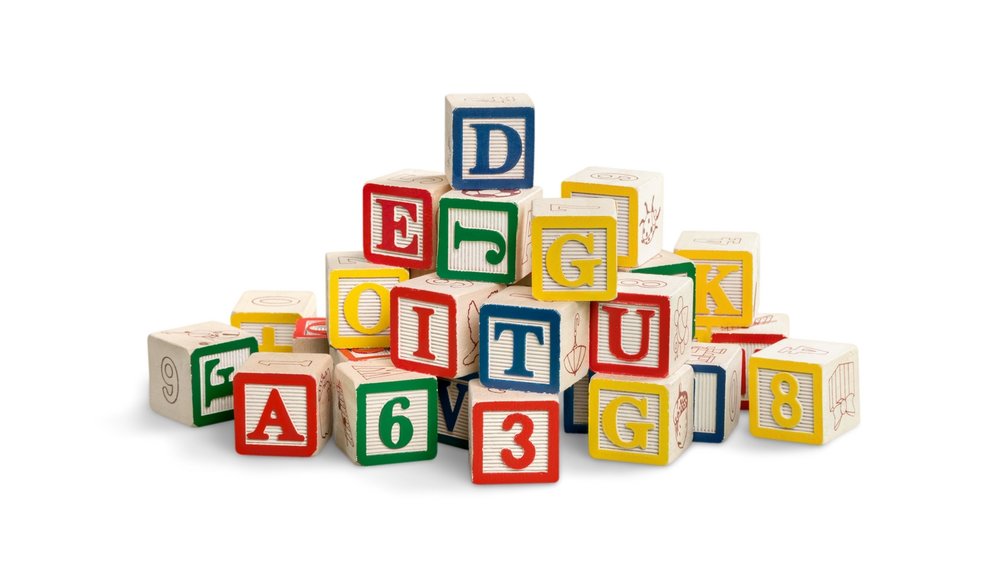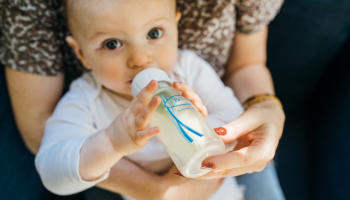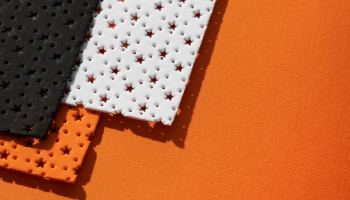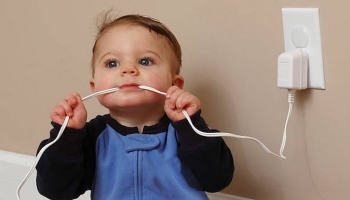
Children thrive on learning through play, and toys are essential for this exciting journey. Many of these toys will hold a special place in their hearts and memories, perhaps even accompanying them into adulthood.
Choosing toys for your child should be a straightforward process that prioritizes their safety. Unsafe toys can lead to unexpected accidents and injuries!
In 2016, a staggering 174,100 children under 15 had to make a trip to the emergency room due to toy-related injuries. To put that into perspective, it’s like 477 kids showing up at the ER every single day. Even more concerning is that nearly half of these injured youngsters were just 5 years old or younger. Hence, safety in play should be a top priority!
To help you make the right choices, we’ve compiled a guide on choosing safe toys for kids.
How To Choose Safe Toys for Your Kid
1. Age-Appropriate Selection
The first and most crucial step in choosing the safest toys is to consider the child’s age. Manufacturers typically label their toys with age recommendations, which are guidelines to ensure they are suitable for a child’s developmental stage. Age-appropriate toys are designed with safety in mind, taking into account a child’s physical and cognitive abilities.
Choosing Safe Toys for Babies (Infants and Toddlers)
Here are some guidelines for selecting toys for babies under 3 years:
- Young children have a natural tendency to put objects in their mouths. As such, children under three should avoid toys with small parts or choking hazards. Always inspect toys for small components, and if you have any doubts, consider whether the toy is suitable for your child’s age group. The key is to stick to items with large parts, preferably soft ones, which are easy to hold.
- Very young babies will enjoy colors, textures, and noises. They love play mats. As they age, they start to develop their mobility. Bouncer seats are always popular, as is anything that works on cause and effect.
- Skip toys like marbles, small balls, and any games featuring balls with a diameter of 1.75 inches or smaller. These pint-sized playthings can be risky for little ones and may lead to choking. Other potential choking hazards include coins, buttons, toys that can fit in a child’s mouth, balloons, small hair bows, barrettes, rubber bands, refrigerator magnets, pen or marker caps, and exposed batteries.
Choosing Safe Toys for Preschoolers
At preschool age (between 3 and 5), kids are usually really eager to develop their imagination and enjoy being challenged. This is often a great time to start looking at life skills and seeing where their long-term interests might lie.
For example, you could have them try a balance bike and get them age-appropriate versions of adult activities such as play-cooking sets. At this stage, they can grasp basic board games (with large parts), engage in arts and crafts (which they often love), and start taking more of a serious interest in music.
When shopping for art supplies for children of this age, watch out for crayons and paint sets labeled with “ASTM D-4236.” This designation indicates that a toxicologist has given the product a thorough evaluation and, when needed, added safety warnings.
However, here are some toys to avoid for toddlers and preschoolers:
- Toys with sharp, pointy parts.
- Toys made from fragile, thin plastic that can easily shatter into small fragments or create sharp edges.
- Toys containing magnets.
Choosing Safe Toys for Young Children (School-Age Kids)
For school-age kids between 6 and 12, development is an extension of their late preschool years. By now, their personalities, interests, and preferences are becoming increasingly clear. If children express a strong interest in something at this point, it’s likely to be a sign that it will form part of their long-term future.
Since children are wired to explore and develop their imagination and now have the technology to help them, your kid could eventually benefit from owning their first tablet at school age.
Some guidelines for school-age toys:
- When purchasing toy guns, ensure that the barrel or the entire gun is brightly colored to avoid confusion with real firearms.
- Electric toys should bear the “UL” label, indicating that they meet the safety standards as established by Underwriters Laboratories.
- Toy darts or arrows should feature soft tips or suction cups at the end, not hard points.
- Nets should be securely fastened to the rim to prevent potential strangulation hazards.
- Before hopping your kids on bicycles, scooters, skateboards, or inline skates, always ensure they have a helmet that complies with current safety standards. Remember to have them wear the recommended safety accessories like hand, wrist, and shin guards. Check for the United States Consumer Product Safety Commission (CPSC) or Snell certification on the labels to be sure.
- Reserve BB guns or pellet rifles for kids 16 and older to ensure safe handling.
- Most importantly, older children (of school age) should be taught the importance of keeping their toys out of reach from their younger siblings.
2. Durable and Non-Toxic Materials
Safe toys are made from materials that are free of harmful chemicals and meet safety standards. Look for toys made from non-toxic materials like BPA-free plastics, natural wood, or lead-free paints. Furthermore, ensure the toys are well-constructed, with no sharp edges or small pieces that can break off easily.
Expert Tip: Hand-me-down and homemade toys must undergo thorough inspection as there are chances they are not safety-certified. Keep your kids away from painted toys manufactured before 1978, as they could contain lead-based paint.
3. Sturdy Construction
A durable toy can withstand rough play and won’t break into sharp or small pieces. Check for well-secured parts and joints that won’t easily come apart. High-quality construction also minimizes the risk of accidental injuries during play.
4. Avoid Toys with Strings or Cords
Toys with strings or cords can pose a strangulation hazard. These should be avoided for infants and young children. If you choose toys with these features, make sure they are well-secured and too short to wrap around a child’s neck.
5. Consider Noise Levels
Toys that make loud noises may be entertaining but can potentially harm a child’s hearing. Check the toy’s noise level and consider opting for those designed with lower sound volumes.
Expert Tip: Loud toys, like cap guns, musical instruments, and sirens, can reach 90-120 decibels. Placing them near the ear, as children often do, can expose the ear to potentially damaging sound levels equivalent to a jet taking off, potentially causing permanent hearing loss. Avoid such toys for your kids if possible.
6. Battery Safety
Battery-operated toys should have secure battery compartments that are inaccessible to children. Loose or easily accessible batteries can lead to severe issues if ingested.
7. Age-Appropriate Supervision
Even with age-appropriate toys, parental supervision is essential, especially for younger children. Be present when your child is playing, and educate them on safe play practices, such as not putting toys in their mouth and handling toys gently.
8. Read Toy Reviews and Warnings
Before purchasing a toy, reading reviews from other parents or consumers is a good idea. They often share insights into the toy’s safety and durability. Additionally, check for any safety warnings or recalls issued by the manufacturer or relevant authorities.
9. Look for Safety Certifications
Safety certifications, such as the CE mark in Europe or the ASTM International seal in the United States, indicate that a toy has undergone rigorous safety testing and complies with safety standards. These certifications provide extra assurance of a toy’s safety.
10. Stay Alert to Product Recalls
On rare occasions, toy manufacturers may request users to return a product after noticing its safety issues or defects that might endanger your kid. You’ll need to be on alert not to purchase such products. If you’ve already made a purchase, please do your best to return it to the manufacturer as soon as possible.
What makes a toy safe?
In the context of toys, safety means a combination of design and build quality and appropriateness for the child’s development stage.
- Poorly designed toys are likely unsafe regardless of a child’s development stage.
- Well-made toys can be unsafe if the child has yet to reach a stage of development when they can use them appropriately.
- Children can use some toys at different stages of development, provided that the younger children use them under adult supervision.
Other Safety Tips to Keep in Mind Regardless of Your Child’s Development Stage:
- You can trust the labeling if you buy toys from a reputable retailer. If, however, you are buying from a regular local stall, you should be more cautious about its safety, irrespective of the labeling.
- Fabric toys need to be fire-resistant/flame-retardant.
- Stuffed toys need to be whole (e.g., no ripped seams) and should use stitching throughout, i.e., not gluing. If you’re looking at pre-loved stuffed toys, check them thoroughly for small parts, especially hand-made ones.
- Be on the lookout for stuffed toys with stick-on plastic eyes or tied-on ribbons. These are convenient for crafters and fine for adult collectibles but are a choking hazard for young children, according to the American Academy of Pediatrics (AAP). Check the type of stuffing used. Avoid toys with “pellet-type” stuffing (e.g., beans), as these are also a choking hazard.
- Wooden toys need to be solid (e.g., free of mold or the effects of mold) and free of splinters.
- Any toy that holds a child’s weight must be robust enough to handle it.
- Art materials should be actively marked as non-toxic.
Toy Testing Explained:
Frequently Asked Questions
Why is it important to choose toys that are appropriate for a child’s developmental age?
Choosing toys that are appropriate for a child’s developmental age ensures that the toy will be both engaging and safe for the child. Age-appropriate toys help in promoting healthy brain development, fostering skills, and providing appropriate challenges. On the safety side, toys designed for older children might contain small parts or be too complex, posing potential risks for younger kids.
What makes a toy developmentally appropriate?
A developmentally appropriate toy is one that aligns with a child’s current stage of cognitive, physical, and emotional growth. Such toys will:
• Match a child’s current skills and abilities.
• Offer a slight challenge to promote growth and learning but not be so challenging that they frustrate the child.
• Enhance motor skills, cognitive reasoning, or socio-emotional connections.
• Stimulate creativity and imagination.
• Be suitable for the child’s attention span and interests.
What is considered safe for toys?
Safety for toys encompasses several criteria, including:
• Non-toxic materials.
• No small parts that can be swallowed or choked on, especially for toys designed for children under 3.
• Sturdy construction that won’t break or fall apart easily.
• No sharp edges or points.
• Fire resistance.
• Compliant with international or national safety standards (like the U.S. Consumer Product Safety Commission or the European Toy Safety Directive).
• Clear, understandable instructions and safety guidelines.
Which plastic toys are safe?
Safe plastic toys should be free from harmful chemicals and phthalates. Look for toys made from:
• BPA-free plastic.
• PVC-free materials.
• Phthalate-free materials.
Are Ikea toys safe?
Ikea, being a large and reputable global company, follows strict safety standards and guidelines for all its products, including toys. Their toys are tested to meet international and national safety standards. However, as with any brand or product, it’s crucial to check for recalls, read product descriptions, and follow age guidelines to ensure safety.
Are Lego toys safe?
Yes, Lego toys are generally considered safe. The LEGO Group places a high emphasis on safety and quality, ensuring that their products meet global safety standards. However, many Lego sets contain small pieces, which pose a choking hazard for younger children. It’s essential to follow the recommended age guidelines on the box and ensure that younger children do not have access to small Lego parts.








